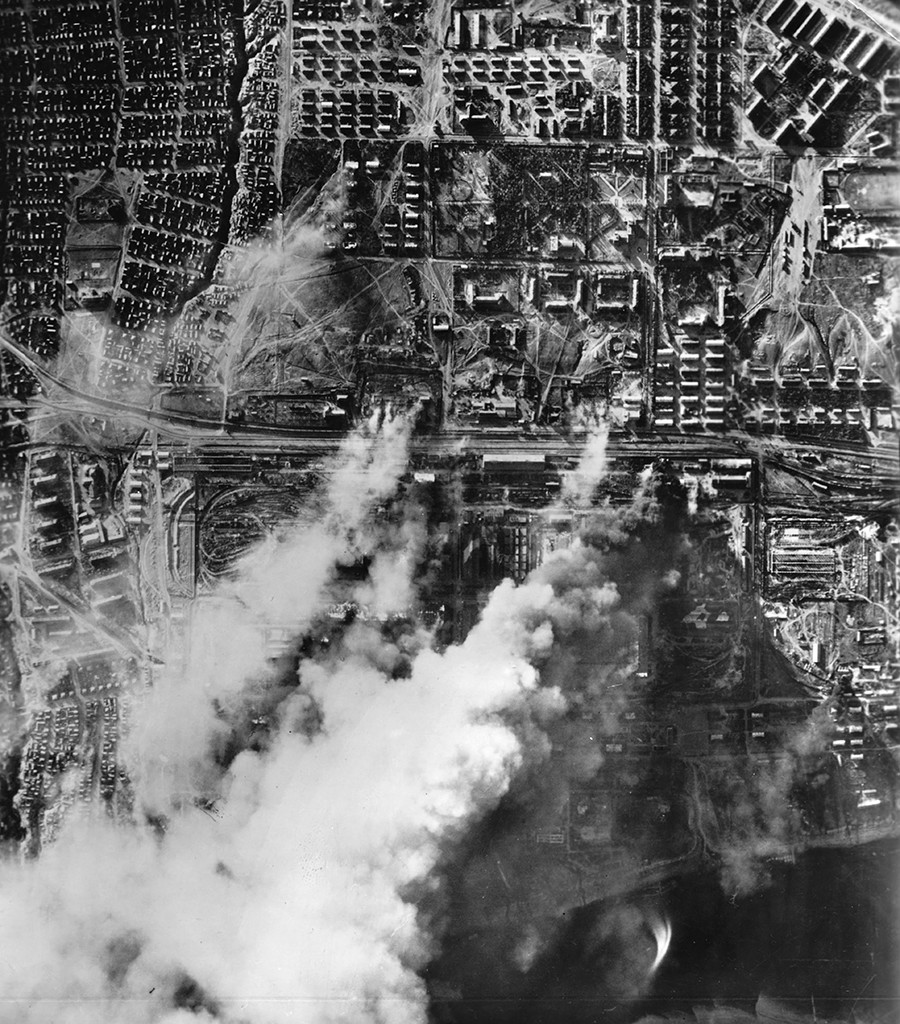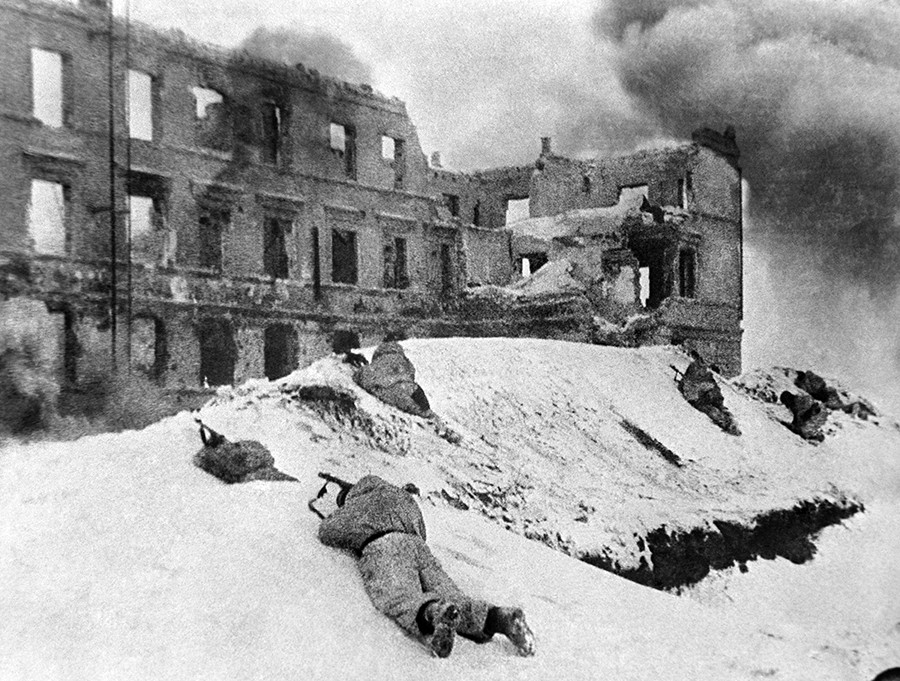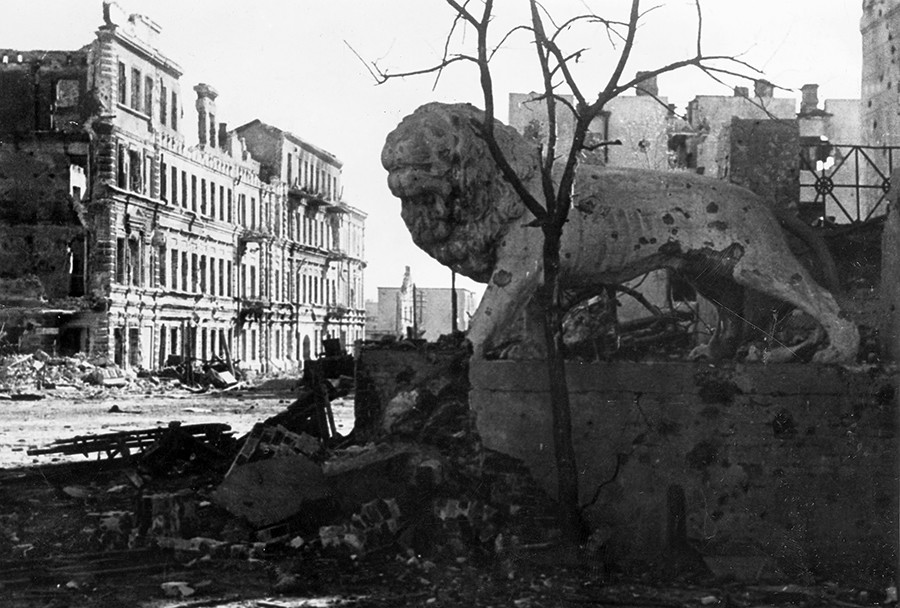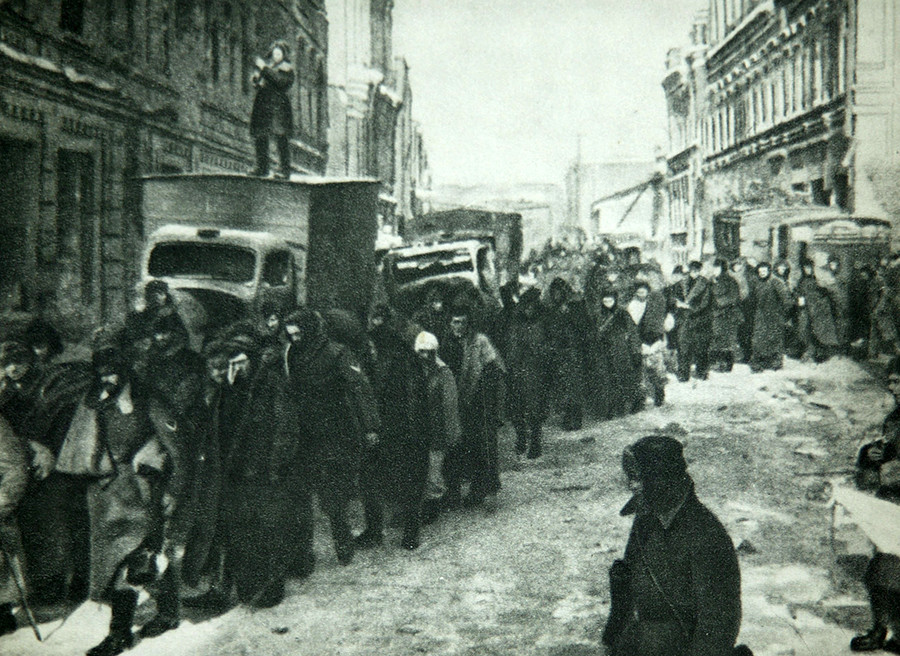In the Battle of Stalingrad What Contributed to the Soviet Victory
Soviet soldier waving the Scarlet Banner over the central plaza of Stalingrad
Georgy Zelma/TASS
Feb. 2 marks 75 years since the end of the bloodiest battle in the history of mankind. It inverse the course of WWII and resigned Frg to defeat. How could this happen to the Nazis who boasted one of the strongest armies the globe's always seen? Here are 3 reasons the Crimson Army triumphed in the battle for Stalingrad.
i.Stiff Soviet resistance
The German onslaught in the summer of 1942 on Stalingrad was virtually impossible to stop. Berlin aspired to take the city at any cost and cut supply routes via the Volga River and deprive Moscow of Caucasian oil. To counter the German offensive the Soviets accumulated all their resources. To boost the morale and subject of the troops Joseph Stalin issued the famous Order 227. It blamed "due south ome stupid people at the front end" who "at-home themselves with talk that we can retreat further to the east" and stated that information technology was "fourth dimension to finish retreating."
"Non i step dorsum! Such should now be our main slogan."
In August the retreat stopped at Stalingrad. Another slogan of that time was "There is no land for us backside the Volga River." The city government urged its residents to turn "every block of flats, every quarter, every street into an unwinnable fortress." That is pretty much what happened and the resistance shown by the troops and urban center's residents was remarkable.

The High german Luftwaffe bombs Stalingrad in September 1942
Berliner Verlag/Annal//Global Look Press
One High german officer recalled what the battle of Stalingrad was similar: "The enemy holds some of the Ruby-red October institute's territory. The main source of resistance is the open hearth shop. Taking information technology means the fall of Stalingrad. It's been bombed past our planes for weeks…There's no untouched identify left here… In 3 hours we managed to move ahead by just 70 meters! At that very moment a ruby flare appeared, then a green i. It ways the Russians have started a counterattack…I do not sympathize where the Russians go their energy. It's the offset time in this war I've encountered a task I cannot accomplish…Now the open hearth shop is entirely under the control of the Russians." (The link is in Russian)
two. Mass heroism
The potent Soviet resistance would non have been possible without the mass heroism of Stalingrad's defenders. The medal "For the Defense of Stalingrad" was given to about 760,000 Soviet soldiers. Over 100 soldiers were decorated with the highest award, the Hero of the Soviet Union , that marked cases of exceptional courage and self-cede.
Pavlov'south Business firm , an ordinary iv-story apartment building, became a symbol of the resistance by the Red Regular army soldiers in Stalingra d. It was defended by only 24 people simply the Germans could not take it during their

Every building in Stalingrad was turned into a fortress
Georgy Lipskerov/Global Look Press
Mamayev Kurgan, a dominant superlative overlooking the urban center and another symbol of the heroic resistance, witnessed particularly fierce fighting. Control over the colina meant control over the city. The Soviet troops defended their positions on the slopes of the hill throughout the battle. Tens of thousands of Soviet soldiers died fighting for the superlative. After the
3. German mistakes
The success of the Soviet counteroffensive that started in mid-Nov was partly adamant by the mistakes of German commanders. The initial ane concerned the fact that the Wehrmacht overestimated its potential and tried to deal two blows at a time: One to the Caucasus to take Azerbaijani oil and a second on Stalingrad. The Germans dispersed their forces. As Major general Hans Doerr after wrote: "Stalingrad has to enter history as the greatest error ever committed by military commanders, as the greatest disdain to the alive organism of the army always demonstrated by the leadership of the country" (the article is in Russian).

The battle of Stalingrad was a turning point in WWII
Scherl/Global Look Press
Past November some other mistake had been committed. In trying to accept Stalingrad, the German ground forces stretched its flanks for hundreds of kilometers, certain that after their onslaught the Red Army had no resources to counter. What was worse for Berlin was that the stretched flanks consisted of

Around 91 000 High german prisoners were captured in the battle of Stalingrad
Global Wait Press
What was also important, Zeitzler noted, was that by fall of 1942 combat effectiveness of the Soviet troops increased likewise as the level of their commanders" (the article is in Russian). So, when the Soviets accumulated the necessary forces, the Red Army needed just four days to interruption the ranks of the Axis troops and encircle effectually 300,000 German soldiers.
If you want to know more about the battle of Stalingrad, read the recollections of those who experienced those traumatic events.
If using any of Russia Beyond's content, partly or in full, always provide an agile hyperlink to the original material.
Get the week's best stories straight to your inbox
Source: https://www.rbth.com/history/327480-reasons-why-red-army-won-stalingrad
Post a Comment for "In the Battle of Stalingrad What Contributed to the Soviet Victory"